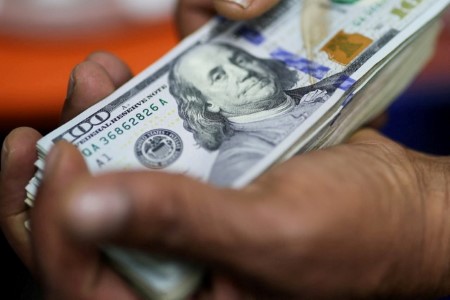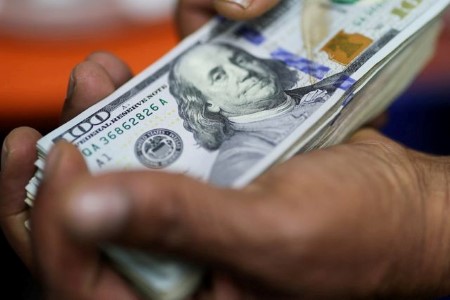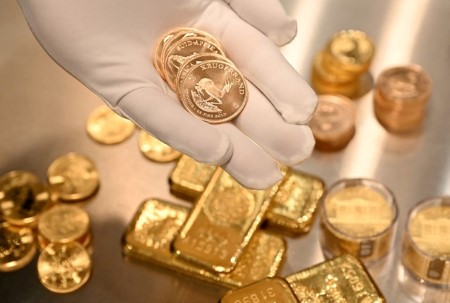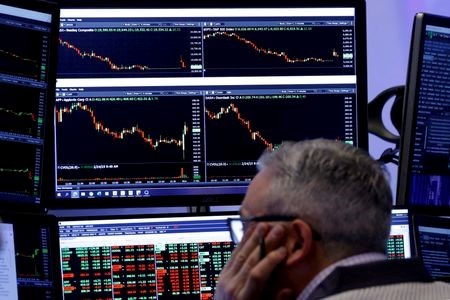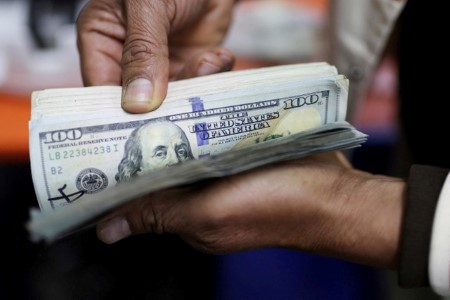US Treasury yields drifted higher on Tuesday, rebounding after the yield on two-year notes hit five-month lows earlier, as risk-off sentiment eased in global markets a day after a Wall Street selloff.
The two-year Treasury yield was little changed at 3.891%, after hitting 3.83% during Asian hours, its weakest level since October 4.
The benchmark 10-year yields were up 3.2 bps at 4.244%, holding above a near 4-1/2-month low hit last week.
On Monday, two-year yields fell around 10 basis points in their biggest daily drop since September after US President Donald Trump declined to rule out a recession as a result of his tariff policies.
Wall Street stocks were lower on Tuesday, but declines were smaller compared with Monday’s sellfoff in a sign that sentiment was somewhat recovering.
“It’s challenging to decipher Trump’s policy and its impact on the Treasury market,” said Massimiliano Maxia, senior fixed income specialist at Allianz Global Investors.
Maxia is neutral on Treasuries, but said his view could change “if we have strong evidence of a significant weakening of the US economy. We have just seen some alarm bells as of now.”
But in one worrying sign for the bond market, a measure of default risk was creeping higher.
US short-dated credit default swaps, instruments used to hedge credit exposure, rose on Tuesday to their highest levels since the US election on November 5, reflecting creeping anxiety about the US debt ceiling.
One-year credit default swaps now trade at 45 basis points, according to S&P Global, up from 43 bps on Monday. The five-year CDS traded on Wednesday at 41 bps, also the highest since November 5.
Junk corporate bond spreads widened to more than 300 bps on Tuesday, their most since September, a sign that investor confidence is deteriorating as worries about a recession and global trade war rise.
US Treasury yields, however, were little moved after the release of economic data that met expectations. The latest job opening figures for January showed 7.7 million vacancies. The NFIB Small Business Optimism Index fell by 2.1 basis points in February to 100.7.
“Optimism is fading a little bit, but it’s still far from certain that we’re going to see negative economic growth,” said Guy LeBas, chief fixed income strategist at Janney Capital Management. “It’s hard to draw a line through any one data point,” he added.
A closely watched part of the US Treasury yield curve measuring the gap between yields on two- and 10-year Treasury notes, seen as an indicator of economic expectations, was at 34.3 basis points, just below its level at Monday’s close.
“The distribution of possible outcomes has increased with the tariffs, and you could see a possible slowdown from job loss,” said Mike Sanders, portfolio manager and head of fixed income at Madison Investments.
“I think in general you’re going to have (Treasury) spreads just trade a little directionally with where equities are going to trade, but it’s going to be a bumpy couple of months until you see a conclusion of what’s getting implemented.”
On Tuesday, the US Treasury auctioned USD 58 billion in three-year Treasury notes. The offering received over USD 156 billion in competitive bids and came with a high yield of 3.908%, slightly higher than the 3.902% expected rate forecast.
(Reporting by Matt Tracy in Washington; editing by Christina Fincher, Rod Nickel, and Leslie Adler)







 DOWNLOAD
DOWNLOAD




